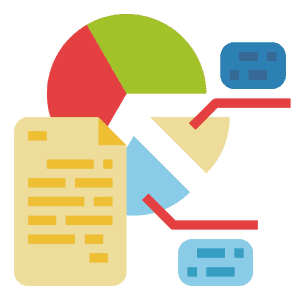Pennsylvania Electricity Rates Comparison

Pennsylvania is one of the 18 US states with deregulated energy, giving Pennsylvania residents the choice of their retail energy provider. What does electricity deregulation mean in practice? The local utility company continues to manage and control the delivery portion of the electricity (lines and wires) but is no longer in the business of providing the lowest Pennsylvania electric rates. Instead, Pennsylvania residents can shop with one of many Pennsylvania electricity suppliers to find fixed-rate, variable-rate, and clean energy plans. We will show you how.
Cheapest PA Electric Rates
There are numerous utilities in Pennsylvania, including PECO Energy, PPL Electric Utilities, Duquesne Light Co., Penelec, or Penn Power. If one of them is your utility provider, you can compare their standard tariff (also known as Price to Compare) to other energy plans in Pennsylvania available in your zip code.
PECO Energy
PECO is the largest combination utility company in Pennsylvania, serving about 1.6 million electric and over 511,000 natural gas customers. The utility company’s default residential rate is altered on average four times a year. The current PECO Price to Compare is listed below. Locking in a fixed rate will prevent PECO Energy customers from dealing with the volatility of their Price to Compare default rate.
PPL Electric
PPL Corporation is an energy company headquartered in Allentown, Pennsylvania, that delivers electricity to more than 10 million customers in Pennsylvania, Kentucky, and the United Kingdom. PPL Electric’s standard default rate, also known as the PPL Price to Compare, changes every six months.
Met-ED
Met–Ed serves more than 560,000 customers in southeast Pennsylvania. The utility company’s current standard residential default rate is listed below. The Met-Ed Price to Compare is updated on average twice a year.
Duquesne Light
Duquesne Light provides energy services to over half a million residents and businesses throughout southwestern Pennsylvania, many of whom reside in the Pittsburgh city limits. The Duquesne Light Price to Compare is updated twice a year with the current price listed below.
Penelec
Penelec serves nearly 600,000 customers located in western, northern, and south-central Pennsylvania. The utility company’s current standard residential default rate is listed below and changes on average twice a year.
Penn Power
Penn Power is one of the largest energy providers serving the state of Pennsylvania. The utility provides power to more than 1 million customers spanning across popular Pennsylvania cities of Pittsburg, Greenville, and Jamestown. The utility company’s current standard residential default rate is stated below. Penn Power updates their default rate, the Price to Compare, bi-annually.
Pennsylvania Energy Market Data
Last updated April 2024
- The average residential electricity rates in Pennsylvania are currently at 13.3 ¢/kWh (1% lower than the average for the nation).
- The average commercial electricity rate in Pennsylvania is 9.8 ¢/kWh.
- 42.8% of the energy produced by Pennsylvania comes from Natural Gas-powered plants.
- This is likely the direct result of the deregulated retail electricity market forces – increased competition pushing the average prices down. That being said, Pennsylvania energy companies, such as PECO, Penelec, and Penn Power modify their rates every three months, often asking PPUC to approve price hikes.
- When you switch energy companies, your local utility will continue to deliver electricity safely to your door through the state power lines. The only thing that will change will be the supply portion of your energy bill – which will now have the name of your new electricity supplier and a better supply rate!
Source: Pennsylvania energy data from The U.S. Energy Information Administration (EIA)
| . | Main |
|---|---|
| Average Pennsylvania Residential Energy Rate | $0.0918 per kWh |
| Average Pennsylvania Commercial Energy Rate | $0.0848 per kWh |
| % of Renewable Energy in Pennsylvania | 4% |
| Pennsylvania Deregulation Status (Yes/Partial/No) | YES, both natural gas and electricity |
| Main Source of State Electricity - Pennsylvania | Natural Gas |
| Average Pennsylvania Household Energy Use - Month | 873 kWh per Month |
| Average Pennsylvania Household Energy Use - Year | 10,400 kWh per Year |
| Average Pennsylvania Monthly Electric Bill | $161 per Month |
Pennsylvania Energy Market Overview
PA customers pay a very affordable rate of $0.0918 per kilowatt-hour. Thanks to the deregulated energy market, energy plans in Pennsylvania are some of the most affordable in the US. The average utility company takes little charge for their delivery services and every electric supplier works in a very competitive energy market, where lower energy chargers result in more electricity being sold and more customers overall.
However, despite the low average rates offered by the local energy providers (especially in their business energy plans), the average electric bill is not so low – Pennsylvania’s average electric bill is $161, which is a bit higher than the national average. This is due to high power consumption. As more electricity goes to AC and keeps your home cool, energy efficiency solutions proposed by the local utility company, or an energy audit can save a lot of energy and money for you.
Energy Deregulation in Pennsylvania
Pennsylvania decided in favor of energy deregulation in 1996, passing the Electric Choice and Competition Act in 1997, allowing its residents to compare electricity rates and electricity providers. Since then, some 2.1 million households and 250,000 businesses have switched electric suppliers which according to the PPUC Chairman, John M. Quain, resulted in the average Pennsylvania electricity rates dipping by more than 10%.
The Pennsylvania Public Utility Committee (PPUC) regulates the Pennsylvania energy suppliers and rates, ensuring safe and reliable services for customers, and educating consumers about energy efficiency, energy-saving initiatives, and renewable energy options.
PA Power Switch

Coinciding with the Pennsylvania energy deregulation, the state energy comparison site called PA Power Switch was founded by the PPUC to educate Pennsylvanians about their energy choice. The website offers several useful links, including guidelines on how to read your electric bill, explanations of different types of energy products, renewable energy projects, rebate programs, and appliance recycling tips.
Like PA Power Switch, ElectricRate also allows you to compare available Pennsylvania electricity rates and retail electric providers, but our web-based comparison tool also offers additional benefits.
 | Switch to your new service in a few clicks - When you enter your zip code on ElectricRate, you will not only see all rates, with the cheapest deals displayed on the top of the list, but you can also sign up immediately with just a few clicks. |
 | All the information you need in one place - As customers, we all like excellent customer service and extras. That's why at ElectricRate, we carefully review all major suppliers and compile information about customer support hours, ratings, and extra benefits that they provide, such as attractive referral programs, complementary goods, and value-add services. |
 | Get the support you need: Our team at ElectricRate is ready to provide ongoing support to customers, including helping you choose the plan that best fits your lifestyle, notifying you when your plan is about to expire and any additional support you might need. All you need to do is give us a call at 1-888-307-9636 or email [email protected] |
Energy Plans & Products in Pennsylvania
Energy plans are like shoes. One size does not fit all. You should have a good understanding of the typical products that energy providers offer so that you can make an informed choice. We are here to help you. Below you can find an overview of the energy products, available to consumers in Pennsylvania:
| Plan | Description | What's Good? | What's Bad? |
|---|---|---|---|
| Time of Use Tariffs | You pay a different rate based on the time of day (higher rates during peak hours and lower rates during non-peak hours) |
|
|
| Renewable Energy Credits (RECs) | By purchasing 1 REC, you purchase the environmental benefits of 1MWh of renewable energy generation. |
|
|
| Green / Renewable Energy Plans |
|
|
|
| Prepaid Plans | This plan lets you pre-purchase power for your home at a set price, like a prepaid cell phone. |
|
|
| Variable Rate Plans | Your per-unit gas and electricity costs can vary at the discretion of your supplier. |
|
|
| Fixed Rate Plans | Your unit price for gas and electricity will remain the same for the duration of the plan. |
|
|
How To Find The Best Provider For You
What to Compare when shopping for electricity in Pennsylvania by ElectricRateSwitching to a new energy supplier might seem complicated, but we promise you – it isn’t! Follow these simple steps to find convenient fixed-rate plans in Pennsylvania:
Analyze Your Current Energy Plan Costs
Look at the electric supply charges on your utility bill, which will be expressed in cents per kilowatt-hour. This number is called your Price to Compare and your primary objective is to find a plan with a lower number.
Review Your Current Contract and Energy Plan
Switching power suppliers can be costly if you are the type of person that tends to skim through the fine print in your contract. For example, if you are currently on a fixed-rate electricity plan, there might be a penalty associated with switching out too early – check if you can switch without a fee.
Compare Energy Plans & Energy Prices
Use our online search and shopping tool to see available electric rates for your zip code. Find the electricity provider with the lowest rate and if you like what you see, you can sign up right there and then! A pro tip – We all like good customer service. That’s why at ElectricRate.com, we only promote rates from reputable providers, based on their prices, electricity plans, customer service, and extras! Before you sign up, read our review of your new retail electric provider to avoid surprises.
What You’ll Need To Switch Energy Suppliers
To change Pennsylvania energy suppliers, you only need your zip code, a most recent energy bill, and about 5 minutes of your time. The process is as follows:
- Enter your zip code on our website
- Find your monthly usage of electric utilities in your recent bill
- Compare rates from other energy suppliers for a similar energy usage
- Sign up for a new deal and start saving money
The change will be automatic and you won’t have to do anything else.
Getting to know your Pennsylvania Electricity Bill
If you take a look at the plans offered, you will see that the price for electricity paid every month is usually lower than the electric rates you may be paying. For this reason, it is important to know how your Pennsylvania electric bill is calculated. Even the best energy plan will include two types of charges, but in most cases, people do not know this important information: where does the money go.
Unless you made no electric choice and are missing on advantages that such energy plans have to offer, you are probably still using the Pennsylvania utility’s default rate. Although very affordable, there are better offers, depending on your energy needs and habits. Electricity facts are available with every plan description, but they usually do not explain what is it that you are paying. Let’s consider the types of charges found on your electricity bill:
Utility Delivery Charges
The utility delivery charges are there to charge for the act of transmitting and delivering power to your house. These charges are paid per kWh of energy used and the goal is to gather money for maintaining the grid and taking action to modernize the existing infrastructure. Before you ask why you would pay to the company you do not have a contract with, remember that even the cheapest electricity rates include this type of charge.
Every new provider has to include it in their monthly bills, as doing otherwise would mean they could not provide consumers with electricity. For this reason, there are two customer charges. The second charge you pay (also per kilowatt-hour) is the supply charge.
Supply Charges
Supply charges, on the other hand, pay for the electricity you use. Your power supplier uses this money to pay for the electricity you use in the wholesale market. The supplier may make contracts in advance to secure millions of kilowatt-hours that are then delivered when needed. Similar models exist throughout the country.
It is important to know that the single factor that has the highest impact on the price of electricity you pay is how the power plant your electricity provider purchased power from is fueled. If this is a renewable energy power plant, you will pay a green premium, although hydropower is generally excluded from this notice.
Factors that Affect Electricity Rates
If you expect that many factors determine your electricity rates, you are right. Common questions regarding electricity price increases include answers related to fuels, power plant prices, grid expenses, regulations, and weather conditions. Keeping these in mind will require knowing how all of these factors work together to determine the electric rate you pay to your electricity supplier.
These factors change periodically, so if you are on a variable-rate plan, you can expect your utility provider and the energy providers in your ZIP code area to send you a higher or a lower electric bill every month. Without much further ado, let’s consider the factors that determine the energy rate you are paying every month.
Fuels
The highest portion of the cost of electricity goes towards fuels. As there is a variety of fuels that can be used for electricity generation, we will mention only a few of them. Coal is the most commonly used fuel source for generating electricity. The next in line, most commonly used is natural gas. Most electricity plans that provide power from non-renewable sources use natural gas that is burned for creating electricity.
However, as these fuels experience significant fluctuations in power price, it is important to notice there are other fuel sources as well. Renewable energy sources include wind and solar energy, hydropower, as well as biogas energy, tidal energy, and many more. As renewable energy becomes more prevalent in the grid, the green options will become cheaper, enabling you to pay less and save with every green energy plan.
Power Plant Prices
To generate the electricity required by the market and to offer flexibility to cover the peak demand, plenty of power plants are built to provide power to homes in your area. All these plants work day and night to ensure that cases of power outages, brownouts, or even blackouts are sparse, while electricity prices are kept low. These power plants also cost to be operated and maintained and even phasing out costs a significant amount of money.
The only exception here would be the power plants relying on renewable resources. They require more land and their efficiency, price, and energy price vary based on land configuration and solar irradiation. However, they are among the cheapest to build, and maintaining them costs next to nothing. All top providers in Pennsylvania offer electricity plan options with a portion or 100% green energy.
Local Transmission and Distribution Systems
Yet another factor that influences the energy price you pay is the local transmission and distribution system. This system is also known as ‘the grid’ and it involves power lines, poles, and transformers taking electricity from the location where it is generated to your household. These charges are included even in the best rates and are included in every electricity plan.
When shopping for a new energy plan, make sure to understand what these costs entail. They generally cover:
- Maintaining the poles and erecting felled poles,
- Maintaining power lines,
- Ensuring grid stability and as few blackouts as possible,
- Ensuring that your meter works well and periodically changing it for a better device.
Area Regulations
Your local area regulations regulate the energy environment or the energy market in which your power provider can purchase and sell electricity. The goal is to enable good companies to strive and leave things, such as unfair prices in the past, where they belong. Local area regulations work in many ways, especially to ensure your right to affordable electricity, to create an energy market where it can encourage companies to compete which will provide the best conditions, as well as ensure that every new supplier that has entered the market has been checked and marked for approval.
Weather Conditions
Local weather conditions can also significantly affect the energy prices you pay. As bad days pick up, less solar energy can be produced, but more hydropower can be expected in the springtime. This is one of the ways that your green energy plan prices are influenced by the weather. Purchasing a solar array with batteries will give you energy independence if you are looking for it.
On the other hand, even with non-renewable sources, weather extremes can for instance reduce the efficiency of power plants. This is particularly bad, especially if you take into consideration that this is where you need power the most – to keep your household warm, or cold, depending on the season. On the other hand, mild weather usually means lower prices, as the supply can easily meet the demand.
Energy Suppliers vs Utility Companies
Dissecting Myths about Pennsylvania Electricity Choice by Todd YasbinIn deregulated energy markets, there are usually two types of companies that you need to contact to get your power supply. The first one is the utility company. This is the company maintaining the power lines in your ZIP code area. It is also the company you call when there is a power outage or a blackout. This company cannot be switched, as there is only one company covering vast areas. If you are moving into a new address or have just finished building your house, this is the company you call to get a power connection to your house.
On the other side of the equation is the power supplier or the power provider. Power providers are companies working with both wholesale electricity market and retail. This is the company you sign your contract with, and it is also the company that is in charge of securing enough power for your needs. A good power provider will offer a variety of services, including different types of power plans:
- Fixed-rate energy plans,
- Variable-rate energy plans,
- Green energy plans,
- Business energy plans,
- Prepaid energy plans (no deposit, no credit check), and others, depending on your area.
FAQs
Below are answers to some of the questions you might have about the electric choice in Pennsylvania.
Would switching providers be worth it?
In general, the average electricity rates in deregulated energy states (where you can shop for an energy supplier) are lower than in regulated states (where only utility companies are allowed to supply your power). However, switching providers will only be worth it if your new Price to Compare is lower than your current electric rate. Also, be aware that if you are locked in a fixed-rate term plan, there might be a cancellation fee if you decide to switch early.
How do I read my electricity bill?
There are two main charges on your Pennsylvania electricity bills – supply charges and a transmission & delivery service (TDS) charge. Both supply and TDS rates are multiplied by your monthly usage (amount of kilowatt-hours you use). The TDS rate is fixed – it’s driven by your electric distribution company. If you live in a competitive market state, such as Pennsylvania, you can choose a better supply rate by comparing residential electricity rates in Pennsylvania in an online marketplace.
How do I lower my Pennsylvania electricity bill?
One sure way to lower your utility energy costs is to reduce your energy usage. Some appliances in your home, such as air conditioners are energy guzzlers! There are many benefits to conserving energy – potential savings, improved quality of life, and even a hike in your property price. But don’t end there. In Pennsylvania, all residents have the right to shop for competitive rates, signing up for the best price. You can compare available rates by entering your zip code on ElectricRate – we review all major power suppliers in your state, whether you are after a fixed-rate plan, a variable rate, or alternative energy credits.
Did PECO raise rates?
On June 1, 2023, the state utility PECO set their new price to compare rate at $0.10312 per KWh. The rate will stay in effect until September 1, 2023. For residential customers, this means that the PECO rate is higher than current competitive rate offers available. Shopping for a low fixed rate will result in lower bills and prevent the PECO bill from raising further if the next price to compare rate goes up again.
Conclusion
Pennsylvania has one of the cheapest electricity rates in the US. With less than 10 cents per kilowatt-hour, living and working in Pennsylvania is very affordable. However, considering high power consumption, as well as the need to modernize the grid and reduce energy losses, you should always consider doing an energy audit and seeing where you can save energy around your house, before comparing Pennsylvania electricity plans and seeing which power options are the best for you.
Updated on
